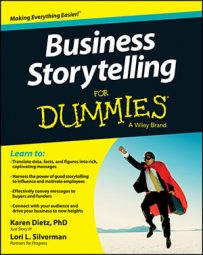As you’ve just experienced, a single story in your business can have multiple themes and potential key messages. Those are called layers of meaning. Where do these emanate from?
Characters can embody different meanings because of how they act and transform.
The conflict (problem/struggle/trouble) can convey different meanings depending on how many obstacles are included and how they’re overcome.
What a personal story means to you can shift and change over time.
You may be thinking, “So what? Why do I need to know that a single story can have multiple layers of meaning?” It’s important for two reasons.
First, when you start work on identifying the key message, it’s possible that what you thought was important to convey turns out to not be, and something else emerges in its place. That’s because crafting a compelling story is an iterative process. As you share your story with others, the key message may change based on their feedback and reactions.
Second, when you move from the raw story to crafting the first draft, you have to decide which meanings to keep with the formally structured version of the story. There may be one or more that aren’t critical to how the main character is perceived or that minimize the key message.
If you were to ask Bob McIlree what he consciously elected to leave out from his story, he’d tell you something like, “I had other activities and initiatives going on at the time, so the delay in getting access to the database and its data didn’t mean that I had nothing to do until it was ‘fixed.’ I just didn’t include them in the story.”
If he had included these other activities and initiatives, they may have added additional meanings to Bob as a character (for example, he’s a workaholic) and to the problem (maybe the situation isn’t really all that urgent because Bob is working on other things).
How do you begin to identify these layers of meaning? You need to answer all these questions in figuring out the key message. And you’ll want to test the narrative with others and obtain their feedback while you’re crafting the story.

